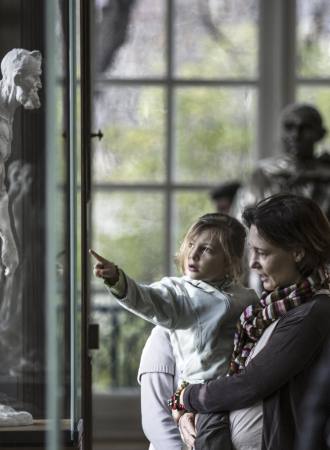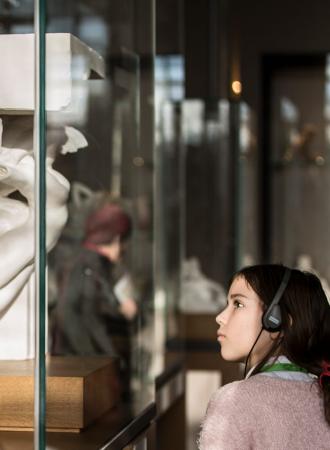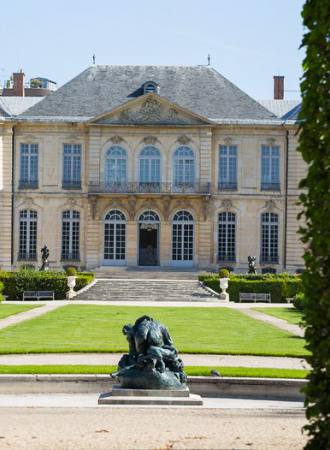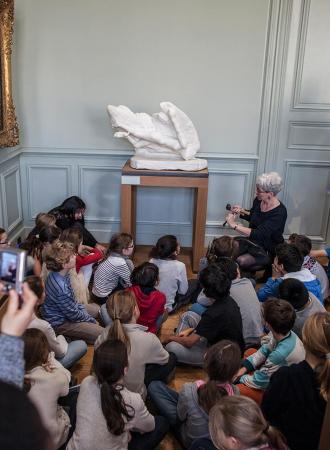Search the site
The Kiss, large model
Auguste Rodin (1840-1917)
Nineteenth-century artists were fascinated by the story of Francesca and Paolo, the doomed lovers from Inferno, the first book in the Divine Comedy by Italian author Dante Alighieri (1265-1321). Rodin’s interpretation of the couple is probably the most famous: it depicts the lovers exchanging their first kiss before being found and stabbed to death by Francesca’s husband Gianciotto Malatesta, who thereby condemned them to wander through Hell for all eternity. Rodin originally placed this group on the left door of The Gates of Hell, opposite Ugolino; however, considering this image of blissful happiness ill-suited to the overall theme, he removed it in 1886 and replaced it with another group showing Paolo and Francesca clinging desperately to each other in Hell.
The original group, exhibited in 1887, is a fairly classical pyramidal composition depicting a simple subject: a man and woman exchanging a kiss. The male figure’s rather rigid back and tentative right hand contrast with his partner’s unhesitating embrace. The work was initially entitled Francesca de Rimini but, due to the nudity of the figures and the lack of any detail or historical context, it was perceived as an allegory by the public and critics and became the universal symbol of love known as The Kiss. Rodin had an enlarged plaster version made, which he exhibited in 1898 as a companion piece to Balzac. Three marble versions made after 1900 established its lasting fame.
Locate the artwork in the museum
Musée Rodin - Meudon, plaster gallery
We cannot guarantee the presence of all our artworks; some may be out on loan.
SEE ALSO
Completion date :
About 1882
Dimensions :
H. 189 cm; W. 113 cm; D. 113 cm
Materials :
Plaster
Inventory number :
S. 5717
Credits :
© Photographic Agency of musée Rodin - Jérome Manoukian
Additional information
Iconography
- The Kiss(zip, 1759.6 ko)






